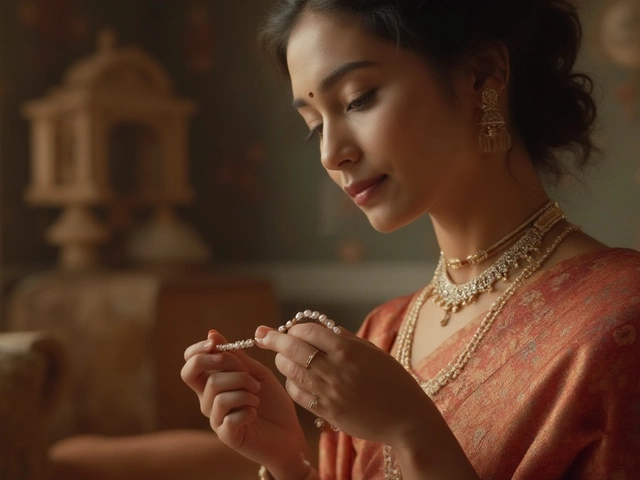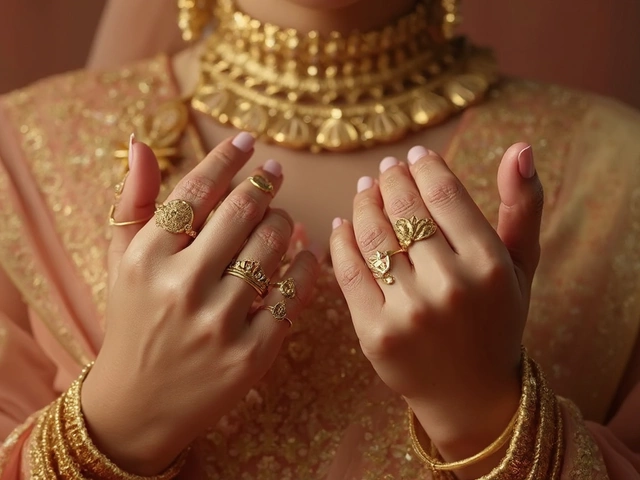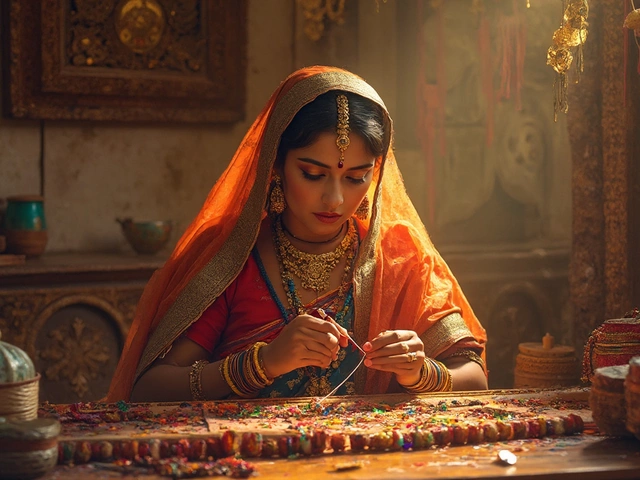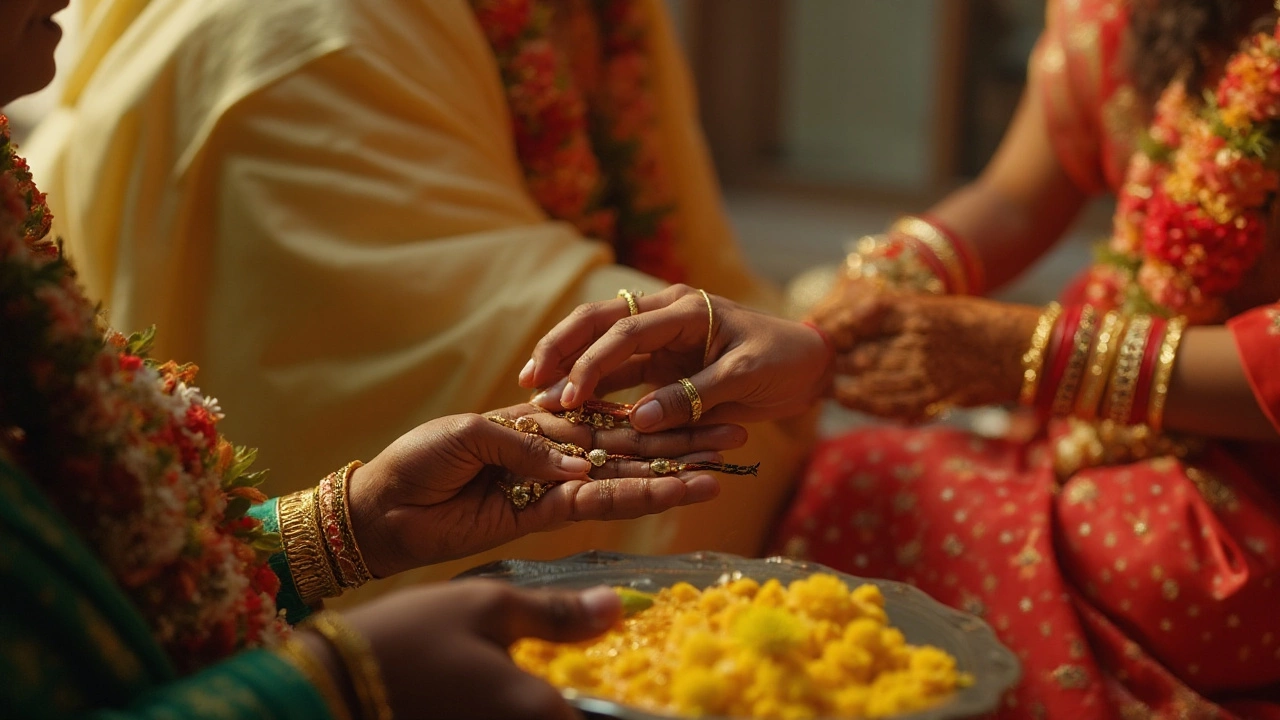
You clicked because you want one clear answer: who actually gives the bride the mangalsutra-who pays for it, who presents it, and who ties it? Here’s the straight talk. The groom ties it. The necklace is usually gifted by the groom’s family (though this flips in some regions, and sometimes both families contribute). During the ceremony, the priest or a senior woman hands it to the groom, and he ties it around the bride’s neck. That’s the core. But weddings are local and family-driven, so details change by community, region, and interfaith context. I’ll give you the quick answer, the step-by-step flow, and how it plays out across India and the diaspora-without the confusion.
TL;DR: The Quick Answer
- The groom ties the mangalsutra (mangalya/thali/minnu depending on region) during the marriage rites.
- Who “gifts” it? Traditionally the groom’s family, but in some communities the bride’s side provides it; in Telugu homes, both sides contribute two gold discs that become one.
- Who physically hands it over? The priest or a respected female elder passes it to the groom at the exact muhurat (auspicious time). He ties three knots; his sister or a female relative may help with knots two and three in many South Indian customs.
- Exceptions exist: Bengali and Sikh weddings don’t traditionally use a mangalsutra; Kerala Christian weddings use a “minnu” (also tied by the groom). Modern interfaith couples often buy it together.
- Best practice: discuss and agree early-who buys, design, metals/beads, rituals allowed at venue-then brief the priest/officiant and photographer so the moment runs like clockwork.
How the Mangalsutra Exchange Works: Step by Step
Use this as a practical run sheet, whether you’re planning in Mumbai, Chennai, or Sydney.
- Decide who’s providing it (and the budget). The default in many North and West Indian families is that the groom’s side gifts the necklace. In Tamil, Kannada, and Malayali weddings (thali/mangalyam traditions), either side may provide it; in Telugu ceremonies, each family often provides one gold disc so both lineages are represented. Lock this in early.
- Choose the design and materials. Options include black-bead gold chains (Maharashtrian/North), coin or emblem thalis (Tamil/Iyer/Iyengar), bottle-gourd/vati motifs (Maharashtra), twin-disc mangalasutram (Telugu), or a cross/heart-shaped minnu (Kerala Christian). Align design with your family’s tradition-or agree a respectful hybrid for interfaith weddings.
- Get the priest/officiant aligned. In Hindu weddings, the tying is called mangalya dharanam/mangalsutra bandhanam and occurs after key rites like kanyadanam and before/around saptapadi (varies by tradition). The priest will set a muhurat-down to the minute-so the handover and tying happen exactly on cue.
- Prepare the ritual items. The necklace is placed on a thali with kumkum, haldi (turmeric), flowers, rice (akshata), sandal paste, and sometimes holy thread. In Tamil weddings, the bride’s maternal uncle may carry the yellow thread to the mandap. Sanctioning fire/open flame rules at venues (especially abroad) is smart-some halls in Australia require flameless rituals or special permits.
- The handover at the mandap. At the muhurat, the priest or a senior woman (often from the groom’s family) picks up the sanctified necklace and hands it to the groom. That’s your precise answer to “who gives”: it’s ceremonially passed to the groom, who then ties it on the bride.
- Tying the knots. The groom ties the first knot; a sister or female cousin often ties the second and third knots to symbolize the families’ support. In some regions, the knots are later shifted from a cotton/yellow thread to a gold chain on an auspicious day.
- Blessings and finishing touches. Elder women shower rice petals (akshata), conch shells blow in Bengali-origin homes that adopt the practice, nadhaswaram or shehnai music crescendos, and the couple receives blessings. Photographers should be positioned behind the priest’s shoulder; give them a 5-minute heads-up for the muhurat so they don’t miss the tying moment.
- Aftercare and safekeeping. For heavy thalis or minnu, consider swapping to a daily-wear chain later. Insure the piece, and record the gold weight and hallmark (BIS/HUID in India). Store the purchase invoice with the wedding documents.
Regional Variations: Who Gives What Across India
The broad rule is simple-the groom ties it-but the gifting, design, and who physically hands it over shifts by region and community.
| Region/Community | Local Name | Who Ties | Who Provides/Gifts | Notable Customs |
|---|---|---|---|---|
| Maharashtrian | Mangalsutra (black beads + gold vatis) | Groom | Often groom’s family; sometimes bride’s family gifts | Black beads ward off “drishti”; necklace often kept simple for daily wear; haldi-kumkum blessings by elder women. |
| Tamil (Iyer/Iyengar/Chettiar, etc.) | Thali/Mangalyam | Groom (first knot); sister or female kin assist | Either side may provide; design reflects sect (Vaishnavite/Shaivite symbols) | Maternal uncle may bring the yellow thread; later moved to a gold chain; heavy emphasis on muhurat seconds. |
| Telugu | Mangalasutram (two-disc tradition) | Groom | Each family contributes one disc; become a pair | Discs may be joined permanently after a set number of days; turmeric-thread first, then gold chain. |
| Kannada | Thaali/Mangalya | Groom | Often groom’s family; some share costs | Three-knot tie with female relatives assisting; music with dolu/naadaswara. |
| Gujarati/Marwari/Rajasthani | Mangalsutra (adopted), otherwise focus on sindoor and bangles | Groom | Usually groom’s family if used | Not historically central; many urban families include it today for pan-Indian resonance. |
| North Indian (UP, MP, Bihar, Punjab Hindu) | Mangalsutra (adopted), primary symbols sindoor + bichhiya | Groom | Commonly groom’s side | Sometimes exchanged after saptapadi; design stays minimal for daily wear. |
| Bengali Hindu | No traditional mangalsutra | - | - | Shakha-pola (conch-coral bangles) and sindoor are the key markers; some urban couples add a mangalsutra by choice. |
| Sikh | No mangalsutra | - | - | Chooda and kalire are the main symbols; Anand Karaj doesn’t include mangalsutra. |
| Kerala Christian | Minnu | Groom | Traditionally bride’s family provides | Cross-shaped pendant tied on a thread made from the bridal sari; later moved to a chain. |
Why the variance? Hindu weddings follow the Vivaha Samskara but are locally rooted. The thali tradition in the South is ancient and emblematic; black-bead mangalsutras rose to prominence in Western India. Contemporary urban weddings often blend elements to honor both families.
One more detail that clears confusion: the phrase “who gives the bride the mangalsutra” mixes two actions-gifting and tying. Gifting is about who pays/provides (family decision); tying is the marriage rite (done by the groom). During the ceremony itself, the priest or a senior female elder physically hands the sanctified necklace to the groom, not directly to the bride.
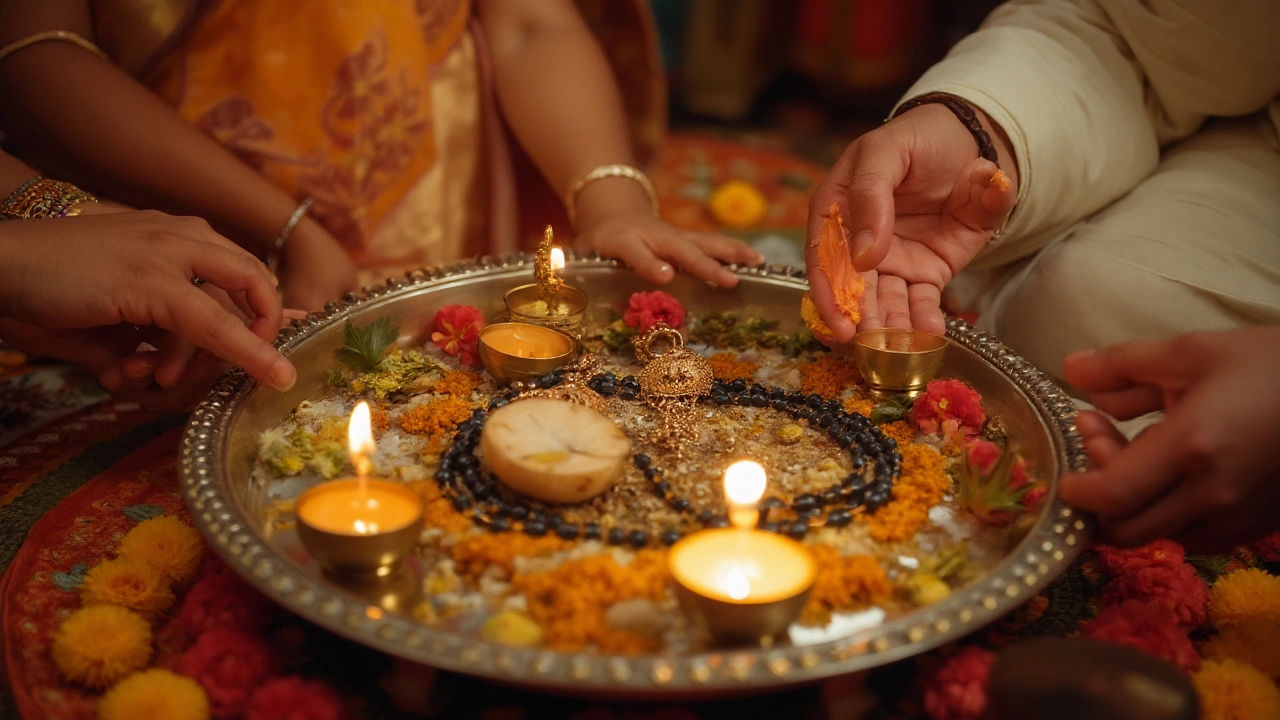
Etiquette, Buying, and Practical Tips
Here’s a compact playbook that prevents last‑minute scrambles and awkwardness.
- Lock the decision early: In the first family meeting, settle: who buys, design language (traditional vs blended), budget, and whether a second daily-wear chain is part of the plan.
- Respect each other’s symbols: If one side is Bengali or Sikh, keep their core symbols (shakha-pola, chooda/kalire) intact. The mangalsutra can be added as an optional ornament if both agree.
- Design heuristics: Daily wear? Go lighter (8-14 g) with secure clasp and rounded beads that don’t snag. Ceremonial heirloom? Consider 22k with community motifs; order 6-8 weeks out for custom work.
- Venue rules (especially abroad): Check heat/open-flame policies for havan. Some Australian venues require electric “havan” or sand bowls. Clear this with the priest two weeks prior.
- Rehearse the handover: Have the priest, a designated elder, and the groom practice the pass and grip. The chain should be unclasped and untangled on the thali. Keep scissors and a spare thread ready.
- Photo timing: Share the muhurat with the photographer. Ask them to shoot from the groom’s back-right so the necklace, knots, and the bride’s face are visible.
- Security and insurance: Note the gold weight, BIS/HUID hallmark (India) or hallmarking equivalent, and insure it with wedding jewelry. Keep invoices in cloud storage.
- Interfaith clarity: Align vocabulary with your officiant. A Sikh Anand Karaj won’t add mangalsutra within the ceremony; do it respectfully as a private exchange before/after, if at all.
- Inclusive choices: If the bride prefers not to wear animal-derived materials, confirm the thread is cotton and adhesives are plant-based. Sensitive skin? Consider hypoallergenic chain options and a smooth pendant back.
Quick etiquette answers people whisper about but rarely ask aloud:
- Can the bride’s father hand it directly to her? Traditionally, no. The sanctified sequence is elder/priest → groom → bride’s neck. If you want a symbolic handover from the father, stage it before the muhurat as a blessing moment, then let the ritual proceed.
- Who ties the third knot? In many South Indian families, the groom’s sister or a close female relative ties knots two and three-seen as bringing the households together.
- Can the couple buy it together? Absolutely. Many modern couples split costs or alternate: one family gifts the mangalsutra, the other sponsors the wedding band or reception.
- Is the mangalsutra legally required? No. It’s a cultural-religious symbol, not a legal condition of marriage. Legal validity depends on registration and compliance with local marriage law.
Examples You Can Model (Real-World Scenarios)
Sometimes a few clear scripts help more than theory. Here are concise, practical setups.
Maharashtrian home ceremony (black-bead mangalsutra)
- Provision: Groom’s family buys a 12-18 g mangalsutra with vati pendants.
- Flow: After kanyadan, the priest sanctifies the necklace; groom receives it, ties the first knot; his sister ties two more. Elder women shower akshata. Photographers shoot from groom’s right.
- Tip: Keep a lighter chain for daily use if the main piece is ornate.
Tamil Iyer temple wedding (thali)
- Provision: Bride’s family provides the thali; groom’s side provides the chain. Maternal uncle brings the yellow thread to the mandap.
- Flow: At the muhurat, priest hands the thali to the groom; he ties the first knot, sister ties the next two. Nadhaswaram peaks; elders bless.
- Tip: Move the thali to the gold chain on an agreed auspicious day for comfort and safety.
Telugu community hall (two-disc mangalasutram)
- Provision: Each family contributes one gold disc; groom’s family buys the chain.
- Flow: Discs tied during mangalya dharanam. After 16 days (varies), families reunite to join the discs permanently.
- Tip: Label discs discreetly beforehand to avoid a mix‑up during the muhurat rush.
North Indian + South Indian interfaith blend (Sydney hotel)
- Provision: Couple co-purchases a simple black-bead chain with a small thali pendant to honor both sides.
- Flow: Registrar-led ceremony first (no fire); Hindu rites follow with electric havan. Priest hands the necklace to the groom; he ties it. Later, the bride’s Punjabi chooda and kalire ceremony completes the blend.
- Tip: Confirm venue insurance for flame-free substitutes and brief the celebrant on timing to keep both ceremonies crisp.
Kerala Christian church wedding (minnu)
- Provision: Traditionally by the bride’s family.
- Flow: Priest blesses the minnu; groom ties it using threads from the bridal sari, later transferred to a chain.
- Tip: Practice the knot so it sits centered in photos.
Checklist and Cheat Sheet
Print this and hand it to your wedding coordinator or a reliable cousin.
- Decision: who gives mangalsutra (groom’s side, bride’s side, or both).
- Design locked: community style, weight, pendant type, chain strength, hallmark.
- Backup plan: spare cotton/yellow thread, safety pin, small scissors, extra kumkum/turmeric.
- Venue cleared: flame policy, mandap space for the priest and the photo team.
- Rehearsal done: handover choreography priest → groom → tie; photographer marks the spot.
- Timing in schedule: exact muhurat noted; emcee cues music 30 seconds prior.
- Paperwork: invoice, insurance, appraisal saved to cloud; gold weight recorded.
- Comfort: hypoallergenic options tested; pendant back smoothed; daily-wear chain ready.
- Respect: if non-mangalsutra tradition (Bengali/Sikh), plan a separate blessing or skip entirely.
Rule of thumb if you’re stuck: default to the groom tying, priest handing it to him, and the groom’s side providing the necklace-unless your specific community norm says otherwise. Always defer to the couple’s preference if there’s a clash of customs.
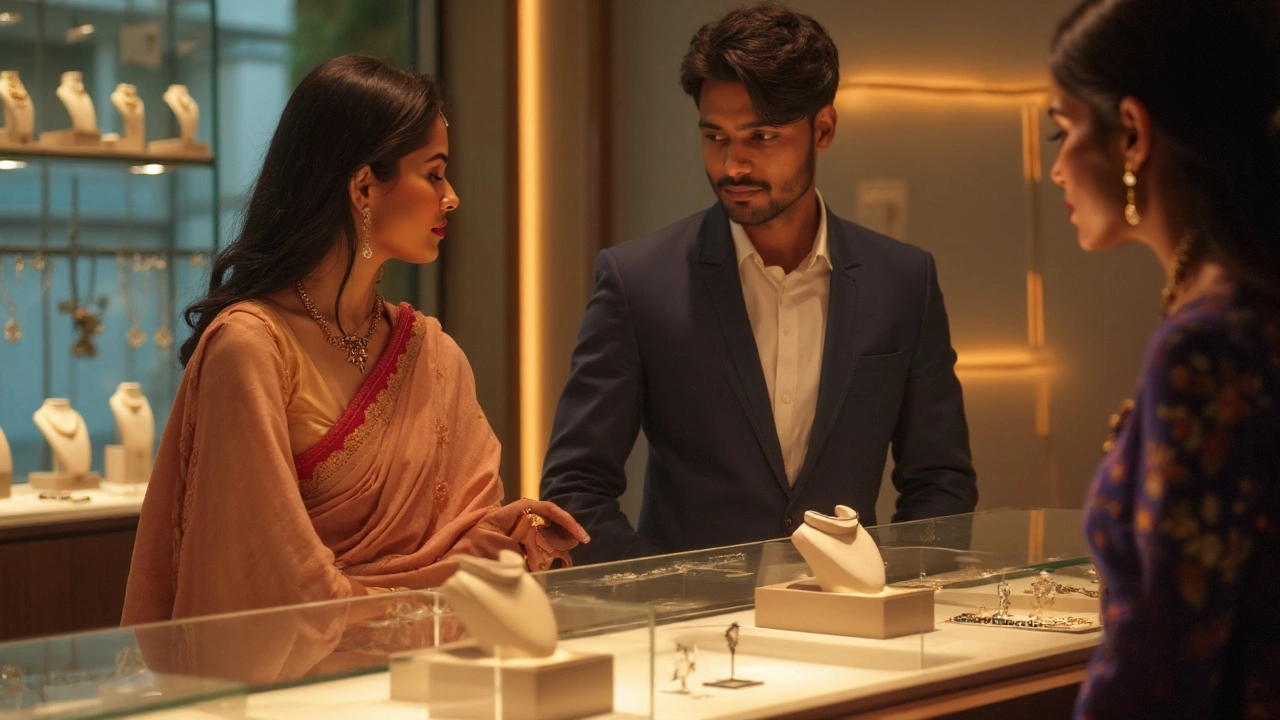
Mini‑FAQ: Your Next Questions
Who literally gives it to the bride? In the ritual moment, no one hands it straight to the bride. The priest or a senior woman passes it to the groom, and he ties it on her neck.
Can the bride’s family gift it and the groom still tie it? Yes. Gifting (who pays) and tying (who performs the rite) are separate. Many families blend: bride’s side provides the pendant; groom’s side provides the chain.
Is it okay to skip the mangalsutra? If your tradition doesn’t include it (Bengali/Sikh), yes. Even within Hindu weddings that do include it, couples can choose a different marital symbol-but align with your priest to keep the ceremony coherent.
What’s with the black beads? In Western India, the black beads are believed to protect the marriage from the evil eye and to symbolize balance. Not all communities use black beads; some use a plain gold chain with a thali/minnu.
Second marriage or widowhood-any changes? Families often prefer a simpler or redesigned piece. Ritual details are adjusted at the priest’s discretion; there’s no pan-India legal rule about design or knots.
Do we need two mangalsutras? Some couples keep a ceremonial heirloom for occasions and a lighter daily-wear piece. If your tradition is Telugu with two discs, that’s one item with a two-part pendant, not two necklaces.
Can the bride tie it herself? The rite symbolizes the groom’s vow; he ties it. If there’s a physical limitation, a priest may permit assisted tying while the groom holds the thread-speak to your officiant.
Legal recognition? The mangalsutra is symbolic. Your marriage’s legal status comes from registration under the applicable marriage act and the officiant’s compliance with local law.
Next steps & troubleshooting
- If families disagree on who provides: Split contributions (discs/pendant vs chain) or trade off with another key expense (wedding bands, reception).
- If venue bans flames: Use an electric havan or symbolic lamp; keep the tying at muhurat with the same handover sequence.
- If interfaith ceremony needs balance: Keep each tradition in its rightful ceremony (e.g., Anand Karaj without mangalsutra, and a separate private tying if desired).
- If last-minute tangle: Have a pre‑untangled spare on the thali. Don’t fight the clasp during muhurat.
- If pendant feels heavy: Swap to a sturdier daily chain post-wedding; use silicone guards to prevent skin irritation.
One last practical tip from countless weddings I’ve attended here in Sydney: put someone calm in charge of the thali plate-usually an aunt who doesn’t leave the mandap. Most delays happen because the necklace isn’t at hand when the priest calls time. With the right prep, the whole exchange takes under two minutes and becomes the emotional highlight you’ll actually enjoy.
